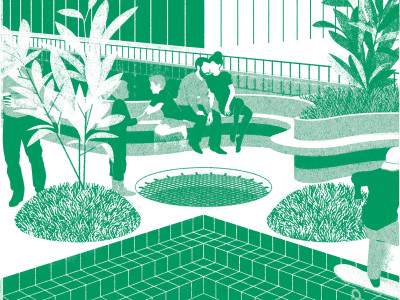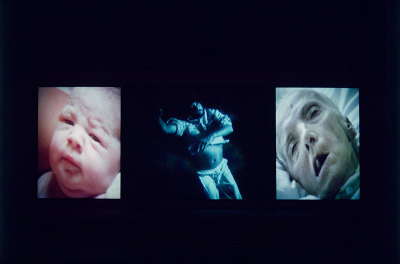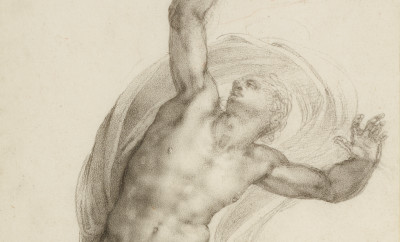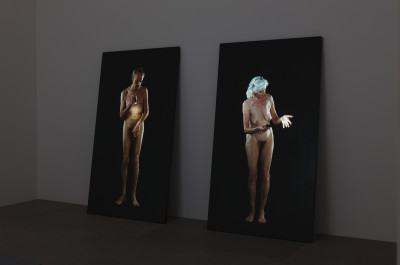“The sunsets were other-worldly” – artist Barbara Rae RA on her Arctic journeys
“The sunsets were other-worldly” – artist Barbara Rae RA on her Arctic journeys
By Sarah Handelman
Published 27 November 2018
RA Magazine’s Sarah Handelman meets Barbara Rae RA in her studio in Edinburgh ahead of her exhibition ‘Barbara Rae: The Northwest Passage’.
-
From the Winter 2018 issue of RA Magazine, issued quarterly to Friends of the RA.
Barbara Rae is a modern-day Argonaut
Instead of searching for the Golden Fleece, the Scottish painter and printmaker’s own epic voyage has taken her to the Arctic – four times since 2015 – to trace the footsteps of the first explorers of the Northwest Passage. Her fascination has brewed since Rae was a teenager. “It was my geography teacher who first told me about the Northwest Passage,” she recalls, “and I thought, ‘I’m definitely going to do that one day’.”A shared surname ignited her curiosity
The history of the Northwest Passage is often associated with the English Royal Navy officer John Franklin and his crew, who in 1845 set off to chart the last unnavigated section of the Northwest Passage in the Canadian Arctic but mysteriously perished. It was another explorer, the Scottish surgeon John Rae, who completed the map and discovered their fate. But his report that they had resorted to cannibalism made him an enemy of Franklin’s widow, and John Rae was lost to history. John Rae’s reputation has since been restored, and his namesake Barbara first learned of the once-forgotten navigator on a visit to Orkney, his birthplace. Although she is not related to the explorer, the artist was so captivated by his story that the Northwest Passage has been her sole subject since 2016. A new series, made as the outcome of three voyages aboard research vessels, charts the artist’s journey and those taken more than 150 years before her.To work, she had to adapt
The Arctic climate made painting directly in the landscape impossible. While navigating the waters Rae sketched and took photographs, which, back in her cabin, she developed into small paintings. Returning to Edinburgh she translated these into large-scale paintings and monotypes, stripping the images to the bare essentials (Sea Ice – Bellot Strait, 2018). The landscape also drew Rae, a master colourist, to a palette of ice blues, indigo and shimmering greys. “There is so much complexity and character to the glaciers and sea, and the sunsets were other-worldly.”
-

Barbara Rae RA, Sea Ice – Ballot Strait, 2018.
© Barbara Rae. Courtesy RA Publications..
-
She has always travelled
Her father was a bus driver, first in Falkirk and then in Crieff, and so Rae grew up “going to far-flung places in Scotland for my own wee jaunt”. These trips laid the foundation for a life of formidable treks, often made alone, to study subjects such as the ancient pictographs in Arizona’s petrified forests, the Moorish villages of Andalusia and botanic life in the Karoo.She learned on the job
Rae says she needed more guidance as a student at Edinburgh College of Art in the mid 1960s. “There were a lot of good artists, but many of them weren’t good teachers”. After graduating, she became a secondary school art teacher before joining the staff of Glasgow School of Art. Teaching, she says, made her a better artist and also highlighted artist view the idiosyncrasies of different schools of thought. At Glasgow life drawing classes “were so different to Edinburgh; it was like the difference between Florence and Venice. In Glasgow, or Venice, it was all charcoal and fuzzies, so you didn’t have to know the anatomy”. The atmosphere of Glasgow led her to reassess her training and methods. “The revelation came when I was a teacher and realised I hated canvas. I cut up my prints and layered them over the surface. Then I ditched the tubes of artists’ oil colour, bought a tin of household paint and let myself go mad.”She paints fast, slowly
Rae is often asked “How long did that take?” “The research and analysis take a long time, but when I make the painting I want to do it as fast as I can because by then I know everything about it. The only thing that might prevent it from going faster is that sometimes the paint doesn’t do what I want it to do.”She wields a sword as well as a paintbrush
Rae was almost a PE teacher. Later, as an art teacher, she joined a fencing team, became a member of the Scottish national team and won a British championship.She says she is never satisfied
This, Rae says, is good because “it pushes you to get involved in your subject matter”. She also explores stories closer to home through surveys of the west coast of Scotland and Ireland. “My work is not about looking at the land; it’s about the people and the culture. I’m interested in the memory of the land – starting with prehistoric peoples, how they learned and survived. The thought that these Neolithic settlements are close to where I work in County Mayo is a constant inspiration to me.”
-
Sarah Handelman is Deputy Editor of RA Magazine.
Barbara Rae: The Northwest Passage is at Canada House, London, from 29 November–13 January 2019.
-
'Barbara Rae: The Northwest Passage' in the RA Shop




